
How Can You Treat Restless Leg Syndrome?
Well Rested Legs provides natural support for agitated legs. It may promote better sleep and reduce stress.
Every one of us was indescribably tired at some point in our lives. You sometimes lay in bed at night, and it seems like your legs still run around doing errands. Now try to imagine having that feeling every night when you go to bed.
Even 10% of Americans suffer from the condition known as restless leg syndrome. It is a neurological disorder, also known as Willis-Ekbom disease. Women are more likely to get the disease, and though it can occur at any age, middle-aged people are at greater risk.
Because of sleep deprivation, untreated RLS might have serious side effects causing depression, fatigue, and severe sleep disorder.
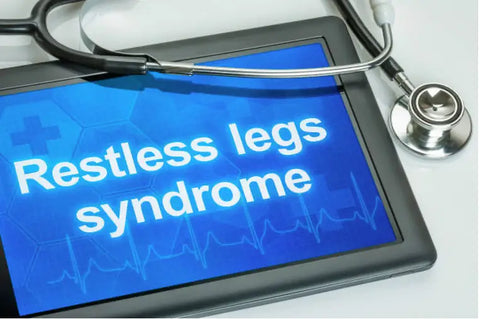
What are the symptoms of Restless Leg Syndrome?
The first symptom is the urge to move the legs due to sudden sensations. Those unusual feelings may feel like
- Crawling
- Itching
- Tingling
- Pulling
- Creeping
- Throbbing
- Aching
The sensations are sometimes difficult to describe. By moving the legs, the feeling subsides. It usually occurs when a person rests for an extended period, like sitting or lying down. People feel most discomfort during the night as they try to fall asleep.
The symptoms may affect both sides of the body and the arms, head, or chest. They can happen on one side and then move to the other.
For most people, symptoms get worse as they age.
You may have symptoms occasionally or daily, varying from mild to severe. In severe cases, RLS disturbs night sleep and interferes with daily activities.
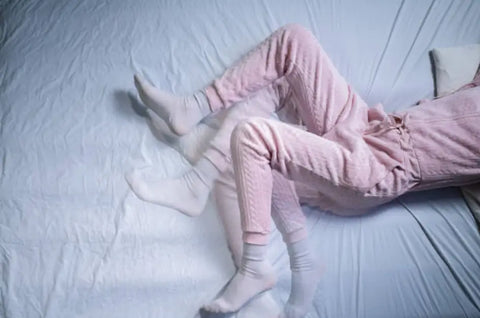
Causes of Restless Leg Syndrome
In most cases, the exact cause of RLS is unknown. Some probable causes are:
- Genetics- almost 40% of people with the disease have a family member that suffers from the RLS. Researchers have found genes for RLS on some chromosomes. When the RLS runs in the family, symptoms start before age 40
- Dopamine- a chemical involved in controlling muscle movement. It may be responsible for involuntary movements.
- Health conditions- some long-term diseases like anemia, Parkinson's, kidney failure, rheumatoid arthritis, and diabetes may cause RLS.
BM208 is recommended for iron absorption, extreme fatigue, and skin pallor.
- Medications containing antihistamines, antidepressants, antipsychotics, and antinausea drugs may worsen symptoms.
- Pregnancy- researches show that 1 in 5 pregnant women suffer from RLS. The symptoms go away a month after childbirth.
- Other possible triggers- include sleep disorders, alcohol abuse, excessive caffeine consumption, smoking, stress, obesity, etc.
Restless Leg Syndrome diagnosis
There is no test to determine if you have RLS. The diagnosis is based on the symptoms, family history, medical history, and physical exam. There are four criteria established by the International RLS study group on which doctors may base their diagnosis.
- An overwhelming, irresistible urge to move legs, usually with an unpleasant sensation like tingling or itching.
- Symptoms occurring or getting worse as you rest
- Symptoms temporarily relieved while moving
- Symptoms get worse at night
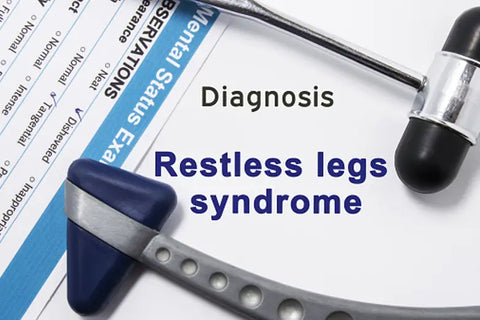
Some additional blood tests or sleep studies may be done. You will most likely be directed to a neurologist or other specialist if some other conditions are involved. Keeping a sleep diary may help doctors assess the severity of the disease. You can write your daily sleeping patterns, the time you go to bed, how long it takes to fall asleep, how many times you wake up at night, etc. Make sure you discuss with your therapist other health conditions you have, medications you use, and supplements you are taking. It is also good to talk about your work environment, travel history, and lifestyle.
Blood tests will check for iron to determine if you have anemia, essential organ functions, and thyroid hormone levels.
If the symptoms persist, you might be referred to the sleep clinic. Polysomnography is a test that measures heartbeat, brain waves, and breathing. The test results may confirm that you have periodic limb movement during the night.
Restless Leg Syndrome risk factors
Sometimes RLS accompanies other conditions, but it usually is not related to any serious health problem.
- Although the condition may develop even during childhood, middle-aged people are at greater risk.
- Women are twice at risk of getting RLS than men.
- Some pregnant women develop RLS during the last trimester of pregnancy. The symptoms usually go away in 4 weeks after labor.
- Having a family member with RLS
- Certain chronic diseases, kidney failure, diabetes, anemia, peripheral neuropathy, Parkinson's disease, etc
- Certain medications, like antihistamines, antidepressants, antinausea, or antipsychotics, may worsen the symptoms.
BM118 may help your body to deal with low mood, sad mood, loss of interest, lack of pleasure in previously enjoyable activities, significant change in appetite, sleep disturbance, etc.
Treatment for Restless Leg Syndrome
No medications cure the disease; most are prescribed to treat specific symptoms. Usually, doctors prescribe these medications to people with RLS symptoms three or more nights per week.
- Benzodiazepins (diazepam, clonazepam, zolpidem) are prescribes to help you relax and sleep better. They are recommended for short-term use, no longer than a week. Side effects include fatigue, drowsiness, headache, sleepiness, dizziness, etc. It is forbidden to operate machinery or drink alcohol while using these medications.
- Dopamine agonists (ropinirole, pramipexol) decrease motion in the legs. They are often first prescribed medicines. These drugs act like dopamine in the brain. The number one side effect is sleepiness, so people who use machinery and tools or are driving should be highly cautious. Alternative side effects are nausea, vomiting, headache, dizziness, low blood pressure, increased heart rate, etc. Dopamine agonists become ineffective over time, so often, doctors may need to prescribe other drugs.
- Opioid analgesics (codeine, oxycodone) are prescribed when other medications don't work. They decrease pain and help you relax so you can sleep better. If used in high doses, opioids are highly addictive drugs. Side effects are constipation, nausea, headache, sedation, dizziness, vomiting, itching, etc.
- Dopaminergic agents (carbidopa, levodopa) increase dopamine levels in the brain. After daily use, they may cause symptoms to worsen, a side effect known as augmentation. Other possible side effects are sleepiness, compulsive behaviors, confusion, nausea, lightheadedness, appetite loss, etc.
- Anticonvulsants (pregabalin, gabapentin) stabilize nerve cell impulses and relieve RLS sensory symptoms. They may also relieve chronic and nerve pain. Common side effects include fatigue, tremor, nausea, dizziness, weight gain, blurred vision, etc.
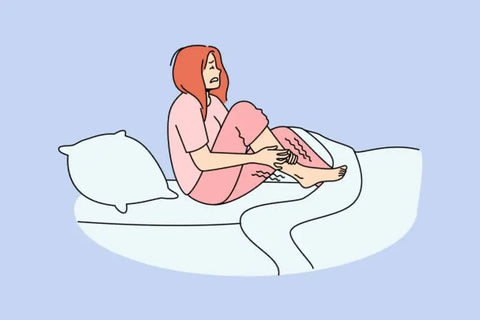
Most of these drugs are not recommended during pregnancy. Sometimes they become ineffective over time or even worsen the RLS symptoms. Whenever possible, it is good to avoid the use of these medications. There are many lifestyle changes you can make to lessen the symptoms.
Home remedies and lifestyle changes
Some food and substances may worsen RLS symptoms, so the first line of defense would be to avoid them. For instance, caffeine, alcohol, nicotine, and some medications. It is especially advisable to avoid stimulants in the evening.
Many home remedies will ease the symptoms.
- Hot water. Whether you take long, warm baths, or just a shower, hot water will help. It aids your circulation by opening up blood vessels. You can apply warm and cold soaks to help circulation, ease pain, and relieve cramping. Fill one bucket with cold and one bucket with warm water. Then repeatedly put your feet on for 3 minutes in warm water and about a minute in cold water. You can do these soaks twice daily.
- Epsom salt baths before going to bed will help you sleep better. Magnesium sulfate in Epsom salt can help calm the nerves and soothe sore muscles.
- You can make soaks with baking soda as well. Put one tablespoon of baking soda in warm water and soak your legs for 15 minutes every night before you go to bed.
- Establish a good sleep routine. Keep your room clean and cold, change your bed sheet regularly, and make yourself a comfortable sleeping environment. Avoid screens, lights, and digital devices for at least 30 minutes before bed. Try meditation, reading, listening to soft music, or whatever relaxes you. And last but not least, try to go to bed at the same time every evening and wake up at the same time in the morning.
- Warm or cold compresses could be soothing; they make a new sensation for the brain to process. That way, unpleasant sensations like itching or tingling might be reduced.
-
Exercise regularly. It is vital to find a good balance doing exercise because intense workouts, especially in the evening, may worsen the symptoms. Exercise moderate! Even a good walk around the neighborhood might make a difference. Yoga is also a good choice for moderate exercise.
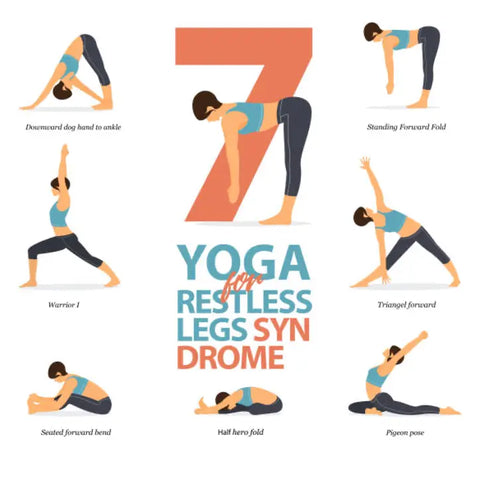
- Try acupuncture. Some research has shown that using acupuncture needles simultaneously with traditional medicines decreases the RLS symptoms. Acupuncture increases circulation locally and systemically, so it may help calm and enhance sleep. You may include herbs along with acupuncture.
- Apple cider vinegar helps balance pH levels in the body and improves nutrient absorption. You can sip it mixed with lukewarm water for 30 minutes before going to sleep or massage a small amount on the legs before bed.
- Herbal teas. Chamomile reduces stress; peppermint tea relieves muscles and helps sleep; parsley tea increases iron absorption.
- Some essential oils may reduce symptoms. Try lavender oil, peppermint oil, chamomile oil, mustard oil, coconut oil, etc. They can all be used for leg massage twice daily.
- Tonic water contains quinine, a compound that acts as a muscle relaxant. Sip a quarter cup of tonic water slowly in the evening before you sleep.
- Take iron and vitamin supplements. Anemia is one of the leading causes of RLS, so taking proper doses of iron might relieve the symptoms. Vitamins that could also help with RLS are vitamin D, vitamin C, and vitamin E.
- Massage improves circulation, relaxes muscles, and helps overall relaxation, which might help better sleep. A wide range of techniques is available; you can combine two or more for better results.
- Treatments called vibration pad, near-infrared spectroscopy, foot wrap, and pneumatic compression show excellent results with RLS symptoms. For all, you need a prescription and are not covered by medical insurance.
It is always advisable to talk to your healthcare provider before you try any of these home treatments. The doctor will establish if any suits you, depending on your medications or other health issues.

Bottom line
RLS can cause many problems with sleeping, daily activities, work, and overall health. Treating RLS should be your number one priority. Always talk to your doctor and find the best solution for the symptoms. Remember that not every treatment works the same for everybody and that you may need several different therapies and medications. You can do a lot by changing your sleeping habits and making new good lifestyle decisions. Do not hesitate to seek help because RLS is a lifelong condition, and you will need all the support from your family, friends, and co-workers.
Sources: NIH, WebMD, Healthline, Mayo Clinic, Johns Hopkins Medicine, Cleveland Clinic, Bestmade Natural Products






Leave a comment